#laganon
Explore tagged Tumblr posts
Text
Popular Chicken Fried Rice Recipe | Chicken Fried Recipe

How to make Classic Lasagna with Ricotta cheese’ at home?
The word “lasagna” or “lasagne” is derived from the word “Laganon” which is a Greek word for pasta. Although many of us connect lasagna pasta with Italy, some claim that it actually originated in either Greece or England. The majority of reports, nevertheless, tend to suggest that the pasta meal as we know it today initially appeared in the Middle Ages in the Italian city of Naples.
The Classic Lasagna Recipe
Ricotta cheese is a popular ingredient in lasagnas because it gives the dish a creamy texture and delicious flavor.
Prep Time: 20 minutes
Cook Time: 1 hour 30 minutes
Total Time: 1 hour 50 minutes
Learen more About click here:-
Chicken Fried Recipe
Popular Chicken Fried Rice Recipe
Chicken Food Fried Breast & Thigh Rice chili Receipe
Fried Chicken recipe
2 notes
·
View notes
Link
Autor: Antonio Costa
0 notes
Text
How to make Classic Lasagna with Ricotta cheese’ at home? - Chicken Fried Receipe

December 6, 2022
How to make Classic Lasagna with Ricotta cheese’ at home?
The word “lasagna” or “lasagne” is derived from the word “Laganon” which is a Greek word for pasta. Although many of us connect lasagna pasta with Italy, some claim that it actually originated in either Greece or England. The majority of reports, nevertheless, tend to suggest that the pasta meal as we know it today initially appeared in the Middle Ages in the Italian city of Naples.
The Classic Lasagna Recipe
Ricotta cheese is a popular ingredient in lasagnas because it gives the dish a creamy texture and delicious flavor.
Prep Time: 20 minutes
Cook Time: 1 hour 30 minutes
Total Time: 1 hour 50 minutes
Ingredients
http://chickenfriedrecipe.com/wp-content/uploads/2022/12/lasagne-768x960-1-2-2.png
1 lb. ground beef
1/2 lb. sweet Italian sausage
1 medium onion -chopped
2 garlic cloves -minced
1 (15 oz.) can tomato sauce
1 (15 oz.) can crushed tomatoes
2 (6 oz.) cans tomato paste
1/2 cup water
2 tablespoons sugar
3 teaspoons salt -divided
3 teaspoons Italian seasoning -divided
1 1/2 teaspoons dried basil leaves -divided
1/4 teaspoon ground black pepper
1/4 cup minced fresh flat-leaf parsley -divided
2 cups shredded mozzarella cheese -divided
15 oz. (1 ¾ cups) whole milk Ricotta cheese
1/2 cup grated parmesan cheese -divided
1 large egg
12 lasagna noodles
Instructions
Preheat your oven to 350 degrees F.
Prepare the meat sauce. Over medium-high heat, add the beef and sausage, breaking them up with a wooden spoon. Add the garlic and onion. Cook for 6 to 8 minutes, or until meat is browned. From the meat, remove the fat. Put the meat back in the skillet.
Add the water, sugar, 2 teaspoons of salt, 2 teaspoons of Italian spice, 1 teaspoon of basil, and the black pepper to the tomato sauce, crushed tomatoes, tomato paste, and water. Stir
Thoroughly to mix.
Cover and reduce the heat to low.The sauce should simmer for 30 minutes. Add 2 tablespoons of the parsley that has been minced.
Make the ricotta mixture while the sauce simmers. 1 cup mozzarella, 1 cup ricotta, 1/4 cup parmesan, 2 tablespoons parsley, 1 egg, 1 teaspoon salt, 1 teaspoon Italian spice, and 1/2 teaspoon basil should be combined in a big bowl. Stir thoroughly to combine.
Cook the pasta according to its package directions.
Put the lasagna together. Add a very thin layer of meat sauce (approximately 14 cup) to a 13×9-inch baking dish. 3 lasagna noodles, 1/3 of the ricotta mixture, and 1 12 cups of meat sauce should be layered. Layers is repeated twice.
Add a final layer of the remaining noodles, meat sauce, 1 cup mozzarella, and ¼ cup parmesan.
Cover with foil that has been sprayed with nonstick cooking spray. Bake for 45 minutes. Remove the foil. Bake 15 more minutes.
Prior to slicing, allow the lasagna to cool for 15 to 20 minutes.
Is lasagna healthy?
Even though lasagna is not typically considered a healthy dinner, you can add nutritious substitutes at home to boost the meal’s nutritional content. When making lasagna, choose whole-wheat noodles rather than white ones because white noodles digest quickly and raise blood sugar levels after eating.
If you’re using ground beef or chicken in your lasagna, choose 95 percent lean cuts, and rinse the meat after cooking to remove any excess fat. To cut down on your consumption of fat, use less cheese, sprinkle it on top sparingly, and pick low-fat mozzarella. Finally, add plenty of vegetables to your lasagna to increase the meal’s fiber, vitamin, and mineral value.
To acquire the nutritional advantages of veggies without dramatically altering the texture of your lasagna, try pureeing the cooked vegetables immediately into the tomato sauce before building your lasagna if you don’t like the texture of vegetable pieces.
For more delicious recipes to check
Hamburger Steak with Onions and Gravy Recipe
Fried Apricot Hand Pies Recipe
Fresh Southern Peach Cobbler Recipe
Southern Pimento Cheese Recipe

0 notes
Photo


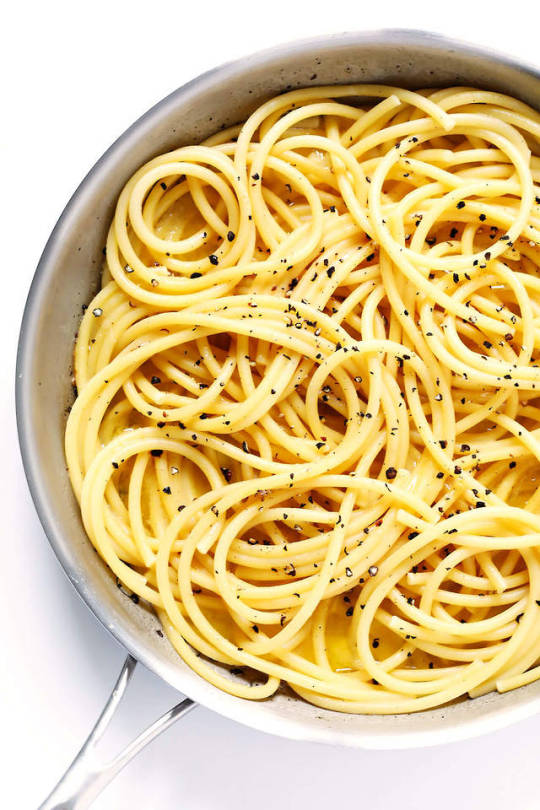

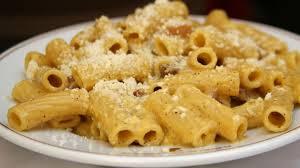




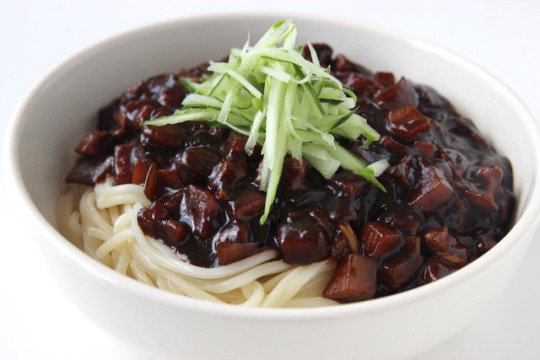
The Twisted History of Pasta
“During the 20th century, Americans developed a love affair with pasta. On the big screen, spaghetti played memorable roles in classic films such as the Marx Brothers’ Night at the Opera (1935), Disney’s Lady and the Tramp (1955), and Goodfellas (1990).”
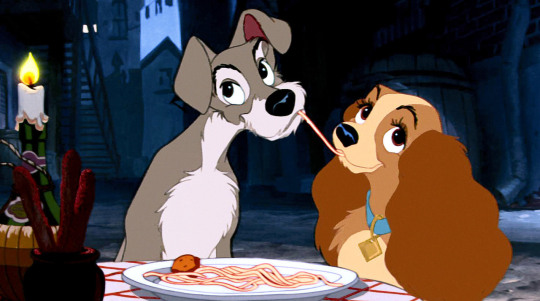
“Pasta’s ethnic roots have been long debated. Many theories have been put forward, some notably far-fetched. An enduring myth, based on the writings of the 13th-century explorer Marco Polo, that pasta was brought to Italy from China, rose from a misinterpretation of a famous passage in Polo’s Travels...Even while Polo was away on his travels in the 1270s, there is a reference to a soldier in the northern Italian city of Genoa, who owned a basket of “macaronis.” A century before, the Muslim geographer al-Idrisi wrote of seeing pasta produced on Sicily.
Many Italian writers have argued that a tomb from the fourth century B.C. bears a relief of pasta-making equipment, suggesting the dish was being enjoyed in pre-Roman Italy...From the 13th century, references to pasta dishes—macaroni, ravioli, gnocchi, vermicelli—crop up with increasing frequency across the Italian Peninsula.”
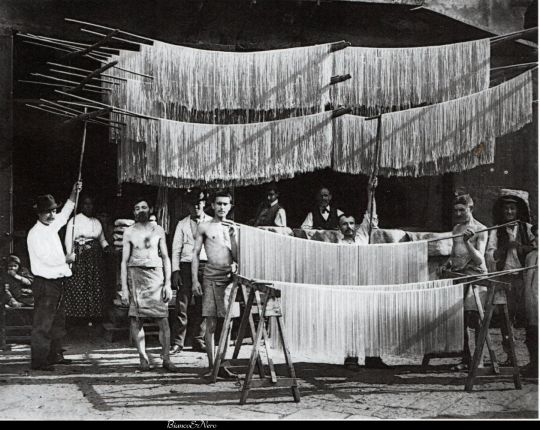
”Pasta was considered a dish for the wealthy, taking pride of place in aristocratic banquets during the Renaissance...in the middle of the 16th century...Pasta, by the late 17th century in Naples, was becoming the main staple of the common diet. Neapolitans had been nicknamed leaf-eaters (mangiafoglia) in the 1500s. From the 1700s they started to be called macaroni-eaters (mangiamaccheroni) instead...the main reason for pasta’s dramatic spread was that, from the 17th century, industrial pasta production was developed with the use of machines such as the torchio, a mechanical press to make noodles or vermicelli.”

“Several things that have changed drastically over time are the flavorings added to pasta. Sweetness has been replaced by savory, sugar swapped out for vegetables, which helped make pasta a nutritionally complete dish. Then, at the beginning of the 19th century, tomatoes were added. For a long time Italians considered them to be too exotic. In fact, it is not until 1844 that the first recipe appears for the most common pasta dish today: spaghetti in tomato sauce.”
(via The Twisted History of Pasta | National Geographic)
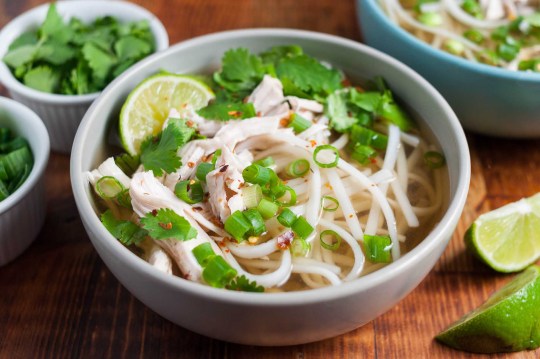
Tracing the Origins of the Noodle
“Noodles are eaten as pho in Vietnam, chow-chow in Nepal, seviyan in India and many other permutations and combinations throughout the globe. While the popularity of noodles is a widely accepted consensus, its origin is still a prominently debated subject. There are numerous contenders who have claimed to be the creators of the Noodle. Italians profess that they are the pioneers of this plant based food, whereas the Chinese argue that they invented this culinary sensation.
Pasta is an integral part of the Italian diet and culture. With shapes ranging from small pinwheels to large sheets, its diversity can be witnessed across the regions of this unified country. Each Italian province has its own rich history with pasta, shaped by its geographical limits and foreign influences, and as a result unique dishes native to these expanses have become a beacon for their identities. The emergence of Pasta in Italy was formerly attributed to Marco Polo, a venetian explorer. He voyaged to China, and upon his return in 1295, he brought back copious amounts of spices and other discoveries which included noodles.”
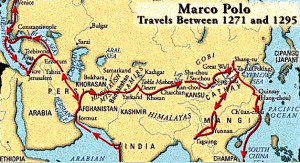
‘Well, Marco Polo might have done amazing things on his journeys, but bringing pasta to Italy was not one of them: noodles were already there in Polo’s time.’(Demeteri, 2018)
[P]asta already existed during the Roman-Etruscan era as ‘Lagane’... Apicius...was a Roman author, who discussed a recipe of ‘laganon’ in his discourse published in the first century AD. These written accounts date back thousands of years. Pasta has thus been a component of the Italian diet for centuries.”

“Arabs played a role in the development and spread of boiled noodles or ‘itriyah’. They significantly influenced Italian food and culinary practices when they invaded the country in the 8thCentury AD. Their cuisine and culture was adopted in regions such as Sicily, where the spread of sweet and savory foods such as pasta con la sarde was observed after the Arabic conquest. Macaroni too, gained widespread admiration amongst the Sicilians at this time.”

“Ramen is not only a culinary phenomenon here; it is a cultural marvel as well. Japan has museums dedicated to this fast-food, ramen stalls throughout the country, and television cooking shows fashioned around this spicy broth with noodles. The widespread consumption of Ramen by the residents of Japan is unparalleled by any other people. These facts beg the question ‘who are the ancestors of these instant noodles’ ‘was there a Japanese predecessor to this curried noodle dish’. On further research it becomes clear that ramen was introduced to Japan in the form of noodles, from China...Ramen, in present day, has become a national staple food in post-war Japan. Even though noodles weren’t devised here, they have become a vital part of the country’s national identity and the favorite grub of its people.”
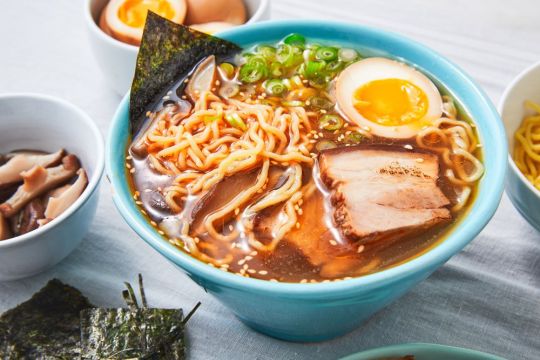
“[T]he most plausible birthplace of the noodle is China...However, even though China maybe the site of the first instances of noodles and they may have introduced some countries like Japan and India to them, this doesn’t necessarily mean that they were the ones who introduced the rest of the world to it. Italians were enjoying pasta long before Marco Polo brought back the secrets of the Chinese noodle trade. As there is very little documented data and only a few preserved artifacts related to Italian pasta, it’s not right to make any broad claims about its beginning. It is also plausible that pasta developed spontaneously in China and Italy at different time periods.”
(via Tracing the Origins of the Noodle | Noodles On The Silk Road blog)

Andō Momofuku: An Inventor Who Used His Noodle to Change Global Food Culture
“ Instant ramen: just add hot water and you have a meal in a few minutes, anytime, anywhere. The product had its beginnings with Chicken Ramen by Nissin Foods, invented by Andō Momofuku in a backyard workshop.
Andō Momofuku (1910–2007) was rightly known as “Mr. Noodles.” His instant noodles, invented in 1958 [48 years old], record yearly sales of 5.5 billion units in Japan alone; worldwide, nearly 100 billion portions are consumed every year, truly making the product a “global food.” Nissin Food Products, the company Andō founded, is part of the Nissin Group, which has grown into a giant with net sales of more than ¥490 billion in the fiscal year ending March 2017.
But before success came many trials. Andō was an up-and-coming industrialist who lost all his wealth overnight. By the time he invented Chicken Ramen, the world’s first instant ramen, he was already 48 years old.”

“Andō left these words: “In life, it’s never too late. It took me forty-eight years to invent this product.”
The idea for instant ramen came to Andō at a black market near Osaka’s main train station during the years of severe food shortages following the war. Under a cold winter sky, he saw a long line of people lined up waiting their turn to eat a bowl of ramen...A few years later, when he did not know where his own next meal was coming from, he recalled that scene and decided to try developing ramen that was simple to make and easy to eat, in addition to keeping well.
[Ando] came up with the flash-frying method, frying the noodles briefly to eliminate moisture. Andō’s hometown of Tainan is known for yi-mian, a type of noodle that is deep-fried before boiling...Andō got the idea from his wife Masako’s tempura. Seeing how she prepared crispy tempura by frying it in a way that drove out excess moisture, he hit on the notion of flash-frying his noodles.”
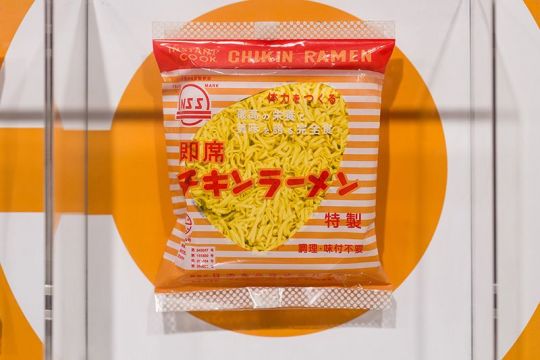
“Thanks to Andō’s experimentation, Chicken Ramen, the world’s first instant ramen, went on sale in August 1958. The noodles are permeated with a concentrated soup consisting of chicken stock and seasonings; simply adding hot water produces a steaming bowl of ramen. Called mahō no rāmen, “magic ramen,” when it first went on the market, Chicken Ramen became a runaway hit.
When Andō first told Masako that he was going into the ramen business, she reportedly said: “If you’re going to do that, make sure you become Japan’s best ramen maker.” Her admonition came true, as Andō watched yearly sales of his Chicken Ramen reach ¥4.3 billion just five years later.”

(via Andō Momofuku: An Inventor Who Used His Noodle to Change Global Food Culture | Nippon.com)
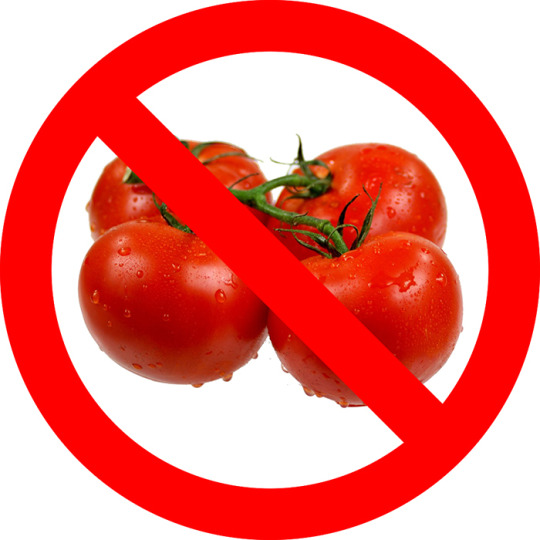
Great Tomato Substitutes for Everyday Cooking
Whether you have an allergy, sensitivity, or intolerance to them as I do, or you simply don't have tomatoes on hand, here are some great substitutes for tomato sauce, crushed tomatoes, and more that you can use in your everyday cooking.
In my effort to both eat foods that taste tomato-like and also save my health, I accidentally found the tastiest substitute in a product that is pre-made, called Marco Polo Ajvar,”

”This is actually a red bell pepper and eggplant spread that has an uncanny similarity to the texture and taste of tomato sauce. The ingredients in this Ajvar are: peppers, eggplant, sunflower oil, salt, sugar, distilled vinegar, and garlic. The product is imported from Bulgaria, which is one of the reasons the ingredients are very wholesome...This product is highly suited for people with allergies and intolerances to tomato. I'm a little addicted to this stuff myself. People you serve this sauce to might not even know it isn't tomato sauce. That is how close the flavor is.”
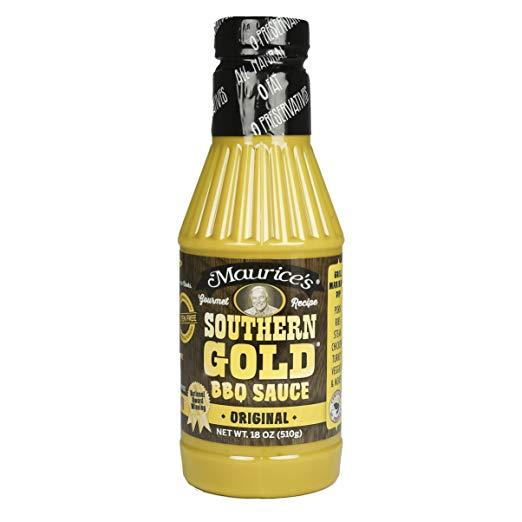
“If you are on the market for a barbecue sauce without tomatoes, try one that is mustard-based...This sauce is from a South Carolina recipe that's been perfected over four generations. Common ingredients in mustard-based sauces include molasses and vinegar and a great blend of herbs and spices. You will not miss the tomatoes at all, and your guests and family will enjoy this as well.”
(via Great Tomato Substitutes for Everyday Cooking | Delishably)

Filipino spaghetti
“Filipino spaghetti, also known as sweet spaghetti, is a Filipino adaptation of the Italian spaghetti with Bolognese sauce. It has a distinctively sweet sauce, usually made from tomato sauce sweetened with brown sugar or banana ketchup. It is typically topped with sliced hotdogs or smokedlongganisa sausages, giniling (ground meat), and grated cheese. It is regarded as a comfort food in Philippine cuisine.
The dish is believed to date back to the period between the 1940s and the 1960s. During the American Commonwealth Period, a shortage of tomato supplies in the Second World War forced the local development of the banana ketchup. Spaghetti with Bolognese sauce was introduced by the Americans and was tweaked to suit the local Filipino predilection for sweet dishes.”
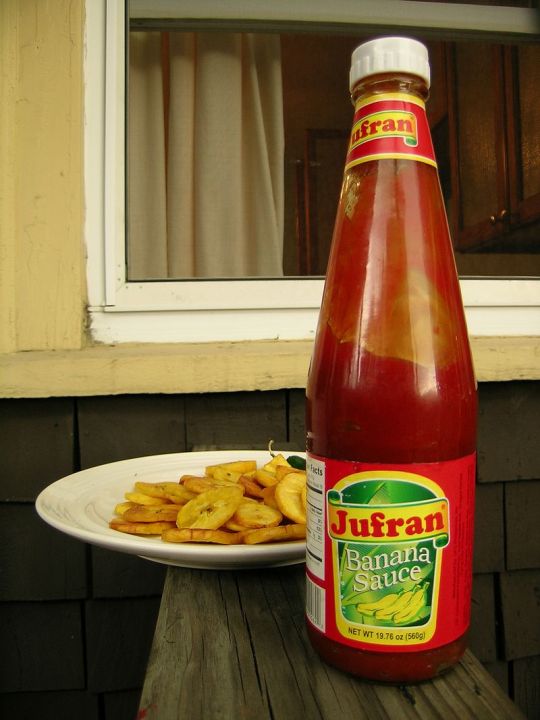
Banana ketchup
Banana ketchup or banana sauce is a popular Philippine fruit ketchup condiment made from mashed banana, sugar, vinegar, and spices. Its natural color is brownish-yellow, but it is often dyed red to resemble tomato ketchup. Banana ketchup was made when there was a shortage of tomato ketchup during World War II, due to lack of tomatoes and a comparatively high production of bananas.”
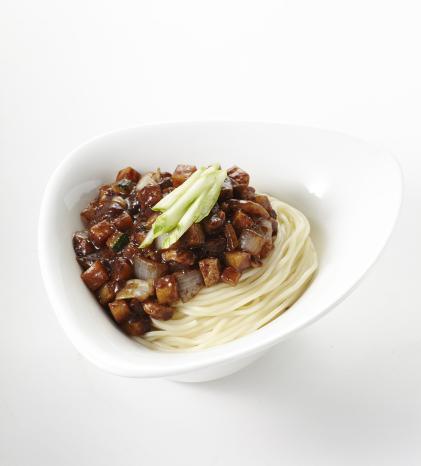
Jajangmyeon
“Jajangmyeon or jjajangmyeon is a Chinese Korean noodle dish topped with a thick sauce made of chunjang, diced pork, and vegetables.
Jajangmyeon dates back to 1905, when it was introduced in Gonghwachun, a Chinese restaurant in Incheon Chinatown run by an immigrant from the Shandong Province of China. The restaurant is now the Jjajangmyeon Museum.
In the mid-50s in South Korea, soon after the Korean War, jajangmyeon was sold at low prices so that anyone could eat it without burden. The new Korean-style Jajangmyeon began to gain explosive popularity among the many merchants visiting the port of Incheon, which was the center of trade, and the many dock workers working in the fish market, and quickly spread throughout the country.“
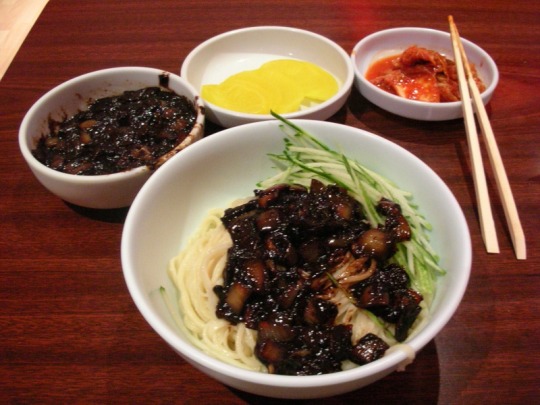
Can My Dog Eat Pasta?
“The answer is maybe. In its plain form, pasta is unlikely to harm your dog, especially in moderation. However, it is worth being careful, as some pets have wheat allergies or are sensitive to grains. Pasta has very minimal nutritional value as well, so while it isn’t poisonous, it shouldn’t be a regular part of your dog’s diet.
Oh, and avoid the sauce. Onions and garlic are toxic to dogs, so pasta sauce can make your dog sick.”

Can my dog eat spaghetti?
Only plain! If the spaghetti is in sauce, most sauces contain onions and garlic, which are toxic to dogs so avoid them completely to be safe. That’s not to mention that most spaghetti sauces include sugar and salt at problematic levels for dogs.
Can my dog eat ramen?
Nothing quite like a salty, meaty, bowl of hot ramen. Unfortunately, both traditional ramen and instant ramen are too salty for your dog to enjoy. If you’re feeding your dog plain ramen noodles, those are usually fine, but again, offer no nutritional value...It’s also good to note that onion and garlic are both popular ingredients in instant ramen flavor packets, so sharing noodles from your bowl isn’t a great idea for your dog.”
(via Can My Dog Eat Pasta? | Rover.com)

#pasta#spaghetti#macaroni#laganon#noodles#marcopolo#pho#chowchow#chowmein#ramen#andomomofuku#nissinfoods#filipinospaghetti#bananaketchup#blackbeansauce#jajangmein#firstdatedinner#tomatofree#mealideas#dogscaneatplainpasta
0 notes
Link
¿Has probado la lasaña de atún? Es una deliciosa combinación de sabores, con pimiento, huevos duros, tomate y por supuesto el atún. ¿Sabías que la palabra lasaña proviene de la antigua Grecia? ‘Lasaña’ deriva del término griego ‘Laganon’, llevaba capas de pasta y salsa, pero no era la receta que hoy conocemos.
0 notes
Text
Another Italian recipe? What is this?
Yes, you read it as another Italian cuisine recipe because why not? It's just that Italian cuisine is easy to make at home, and it is also trendy. SO! Today's topic for Recifee recipe is lasagna with a twist. A vegetarian lasagna. Firstly vegetarian and vegan is different. Let's learn more about vegetarian. Noted that I am not a vegetarian just love to eat their diet. And also actually did an experiment myself about vegetarian food. More about that later if you are interested.
So what is a vegetarian? A vegetarian is someone who cannot eat animal meat and its products or any part of the body of a living or dead animals. This includes meat, poultry, fish, insects or any processing aids created from animal meat or animal product. Their diet consists of grains, pulses, legumes, nuts, seed, vegetables, fruits, fungi, algae, yeast and other non-animal-based foods with or without dairy products, honey and eggs.
There is actually many type of vegetarian:
Vegan
Vegans is a strict vegetarian that do not consume any animal meat or even their products such as red or white meat, fish or fowl, eggs and dairy products. Vegans also do not consume any honey or beeswax, gelatin and other animal by-product ingredients or products. Not only in the terms of food, in fact vegan do not use any animal products such as silk, leather and wool.
Lacto-vegetarians
Lacto-vegetarians do not consume any animal meat and eggs product. However, lacto-vegetarians do consume dairy products such as cheese, milk and yogurt.
Ovo-vegetarians
Ovo-vegetarians do not consume animal meat and dairy products. However, ovo-vegetarians do consume egg products.
Lacto-ovo vegetarians
Lacto-ovo vegetarians is actually the most common type of vegetarian. They do not consume animal meat however, they able to consume dairy products and egg products.
Pescatarian (Pescetarian):
Although it is technically not a type of vegetarian, these individuals do restrict their meat consumption to fish and seafood only. Pescatarians do not consume red meat, white meat or fowl. They are considered as a “semi-vegetarian” or “flexitarian”.
Pollotarian:
Much like the pescatarian, they are also considered as “semi-vegetarian”. This is because their diet contain restriction of meat consumption to poultry and fowl only. Pollotarians do not consume red meat or fish and seafood.
Flexitarian
Flexitarian is a plant-based diet with the occasional meat item on the menu. They limit their intake or consumption of meat as much as possible and they have an almost entirely plant-based diet. This is not technically considered a “vegetarian” diet.
With all of that consider, we doing a vegetarian lasagna specifically an lacto-ovo vegetarians version, its still used animal products such as milk, butter and cheese. You can change it to vegan by buying vegen cheese, that is actually available in Brunei, used other time of milk, like almond or rice milk and used margarine which is a flower based product. So anyway, as you can see from my lengthy blog, vegetarian diets has a special place in my heart. Back to the topic, Lasagna is actually existed way back from the Ancient Greece. It is the first form of pasta and it used to be called Laganon. However lasagne or lasagna was created in the city of Naples, Italy during the Middle Ages and its started to appear in the 14th century cook books. Therefore I created my version of lasagne using tempe or tempeh, a Javanese food made from soyabeans. Soyabeans are actually rich source of protein. Therefore it act as a meat for vegan and vegetarians.
Here are the ingredients:
Lasagna sheets:8 – 9 sheets
Mozzarella cheese
Meat sauce:
100g Tempeh
1 Onion
Olive oil
1 Large can chopped tomatoes
15g or 1 tbsp of Tomato puree
5g or 1 tsp of Sugar
1 Carrots
10 small florets of brocolli
Seasoning : Salt, pepper and herbs
Be’chamel sauce:
1 Bay leaf
1/2 of small onion
500ml of Low fat milk
50g of Butter
50g Plain flour
5g or 1 tsp of grated nutmeg
Seasoning: Salt and pepper
First you soak the lasagna sheets in hot or warm water, set it aside. On stove, in medium heat cook your milk on a pot, add bay leaf, nutmeg and half an onion. let it simmer, until you can smell the aroma. While waiting for the milk, you can preheat your oven to 180 degree celsius. On another pot with medium heat, sizzle some olive oil and add chopped onions, saute, then added minced tempeh, mix well and saute them well . Make sure you turn of the heat for the milk. Then added your canned tomatoes, tomato sauce and tomato puree. Added the sugar and seasoning and taste it. If you feeling like it is missing some things you can add more pepper, salt and sugar. Lastly add on the chopped carrots and broccoli. Let it simmer for 10 minutes.
Reusing the milk pot by removing the milk to a jug or used a new one, it is time to make roux method sauce. In medium heat, add butter to the pot, until it melt then add flour. Stir well and make sure the texture is paste like. Then lower the heat and add milk mixture slowly and gradually at a time but stir quickly and do not stop until smooth and the milk is finish. This is to prevent lumps. Make sure you already drain your milk such as removing the onions and bay leaf. Then you can added the cheddar. Add salt and pepper for taste.
Its assemble time, in a casserole or over-prove dish add meat sauce using a ladle, then the bechamel then the lasagne sheets. Repeat until no space add Mozzarella. Oven it for 15 mins or until its golden brown.

Tadah!!! As you can see, it does look like a normal lasagna. That actually a mission accomplish for vegan and vegetarian. I have trick my family, they thought that its a chicken lasagne. Wish is a biggest compliments. It called TVP or textured vegetarian protein meaning creating something that act as the meat and have the same textured. Tempe is one of it, if you mince and chopped it, it look like a chicken. I have done experiments like this with my other friends. By serving them two lasagne one is chicken and one is tempe. They love the tempe on better than chicken. It is kinda funny to see their shock faces. Other noted you can also change the recipe if you want chicken or meat just change it. But this Vegetarian Lasagne is a must bake and have. Its actually better then meat or chicken plus its cheaper tempe only cost $1 and you can get 4 of them.
Not a vegetarian just love to cook like one.
#vegetarian#tempe lasagne is a must have#worth your time#you can prank people with this lol#recifee#ubdax3305
1 note
·
View note
Photo

Chicken Lasagna
Lasagna, or "Lasagne" is gotten from the Greek word 'Laganon' which is the main known type of pasta. Laganon was not generally lasagna like we know it. It used to be layers of pasta and sauce. Along these lines, the name came from the strategy it was made, not for the fixings it is made with. Laganon used to depict level batter that was cut in strips. In Northern Italy, you will discover lasagna with level noodles and in southern Italy the noodles will be undulated. Here in the United States, we utilize the undulated noodles. The fixings Italians use in their lasagna will rely upon the piece of Italy their family came from. Specialists in Britain discovered a cookbook that had a lasagna formula from the 1390's and guarantee they are the ones that concocted the principal lasagna.
Lasagna has gotten one of the delegated wonders of the American-Italian supper table with numerous layers of pasta, sauce, meat, and softened cheddar that meet up to give your mouth a blast of flavors. Lasagna is solace food, and it is in every case great when arranged accurately. Lasagna planning is not simple. Conventional lasagna is a painstakingly arranged gathering. There are some normal mix-ups made when making lasagna that can destroy it. Ensure you do not overcook the noodles and lay them level on a lubed treat sheet to forestall amassing. Ensure you utilize a béchamel sauce and make the sauce the primary layer. Use bunches of layers and cover it partially through the cooking time so it will not get dry. Brown the main a little with the grill if necessary. There are bunches of approaches to switch customary lasagna around. You can add spinach, simmered red peppers, onions, pesto, ricotta, mushrooms, zucchini, and you can utilize chicken, pork, and ground hamburger. Bubbling noodles is not needed today with no-bubble noodles accessible. They work by getting delicate as the lasagna prepares however there should be a ton of sauce, so the noodles get wet and cook .

Ingredients
Olive oil, lasagna noodles, ricotta cheese 1 cup, 2 eggs, 1/4th cup Parmigiano-Reggiano, fresh lemon, sea salt, black pepper freshly cracked, tomato Sause 24 Oz, chicken boneless 2 cups, 1 pound mozzarella cheese grated.
Directions for cooking.
Step 1
Before starting the actual process of cooking Chicken lasagna, preheat the oven to 375° and then coat the baking dish with olive oil and set the baking dish aside.
Step 2
Cook the noodles as per the instructions on the package and then rinse them with cold water and cool them. Keep the cooked pasta aside till further step.
Step 3
Take a medium bowl, was it and dry it and then mix eggs, ricotta cheese, Parmigiano-Reggiano, lemon, pepper, salt. Mix it properly and set it aside for few minutes.
Step 4
Take a clean baking dish and then spread a thin layer of tomato sauce on the bottom of that baking dish. Lay 4-5 lasagna noodles as per the length of the dish over the layer of tomato sauce.
Step 5
Layer one-third of the remaining tomato sauce over the lasagna noodles and then layer half of the ricotta mixture. Layer half of the chicken over the ricotta and then spread one-third of the mozzarella cheese. Repeat this pattern: noodles, sauce, ricotta cheese, chicken and mozzarella cheese. Add a final layer of lasagna noodles, then add remaining tomato sauce and remaining mozzarella cheese.
Step 6
Now bake the lasagna for 45 minutes or until the upper chis is melted or turned golden brown in color.
Step 7
Remove the dish carefully from the oven and keep it aside for 15-20 minutes before serving.

0 notes
Text
Welcome to Italy!
Mangiare per vivere e non vivere per mangiare (eat to live, don’t live to eat)
Hello bloggers! I am back at it again with another food blog and this time we are traveling to the beautiful rich land of Italy. In America, we love pasta, but we must acknowledge the history behind these wonderful dishes. Since I am an all things pasta person, I decided to make lasagna for dinner. This was my first time ever making this amazing dish, and I can say that it turned out exceptionally well! I will post the recipe I followed in the reference section, and if you decide to try it out reply in the comments!


Lasagna is known to be a popular Italian dish especially around certain holidays, but surprising to my findings, lasagna was discovered within Ancient Greek and British origins. The name “Lasagna”, is originally derived from the Greek word ‘Laganon’ which was the first known pasta noodle. “Laganon” was not made how lasagna is made today with Italian ingredients, but it was still layered with pasta and sauce. All in all, it received its name from the method in which it was made not for its ingredients. Italy claims they were the ones who created the dish first, but they are truly only credited for perfecting the taste and layers. In fact, researchers in Britain found a cookbook with a lasagna recipe that dates back to the 1390’s, staking their claim to the first lasagna. (Fabrizio) Different regional locations of Italy have adopted various ways to create lasagna while using different types of pastas, meat and sauces depending on the season of the year.

The cultural aspect behind this very well known dish reflects how important not only food is within Italian society but how they value family within their society. Family in Italy is recognized as both immediate and extended members within Italian culture. Italian elders are known to be significantly important within an Italian family and therefore receive their meals first as a sign of honor and respects similar to the Taiwanese familial piety. Large gatherings are very common where people each bring dishes that will be shared amongst one another. The importance of family solidarity is a strong withheld practice throughout their culture. You can literally taste the love with every bite of food.
I hope you enjoyed this food blog about Italy! Stay tuned for more food blogs coming within the next few weeks! :)
Check out the final product below!!

References:
https://www.allrecipes.com/recipe/23600/worlds-best-lasagna/
https://viaverdimiami.com/the-history-of-lasagna/
https://florafoods.com/food-plays-big-part-everyday-italian-lifestyle/
https://www.delish.com/cooking/a1206/regional-italian-food/
0 notes
Text
Watch "LAYER PASTA | SOYA CORN LASAGNA | लेयर पास्ता का देसी मजा, बिरयानी मसाले के साथ | NJ-CHEF NITIN JAIN" on YouTube
youtube
https://youtu.be/HppH1kzQ1zw
क्या आपको पता था !
लसान के आधुनिक संस्करण का आविष्कार 1544 और 1692 के बीच किया गया था - जो कि एमिलिया रोमाग्ना या नेपल्स (नेपोलि) में संभव है। लेकिन आधुनिक शैली अन्य समान व्यंजनों पर आधारित थी जो प्राचीन ग्रीस के बाद से अस्तित्व में थे।
आप यह नहीं जानते होंगे, लेकिन तकनीकी रूप से, Lasagna की उत्पत्ति इटली में नहीं हुई क्योंकि आप उम्मीद कर सकते हैं। इसकी उत्पत्ति से प्राचीन ग्रीस का पता लगाया जा सकता है। Lasagna, या "Lasagne" नाम ग्रीक शब्द on लगानोन ’से लिया गया है; पास्ता का पहला ज्ञात रूप। लसान एक पारंपरिक लासगना नहीं था क्योंकि हम इसे पारंपरिक इटालियन सामग्री के साथ जानते हैं, लेकिन यह पास्ता और सॉस की परतों से बना था। तो यह मूल रूप से इसका नाम उस विधि से मिला है जिसमें इसे बनाया गया था, इसके अवयवों के लिए नहीं।
DID YOU KNOW !
The modern version of Lasagna was invented sometime between 1544 & 1692 – most likely in either Emilia Romagna or Naples (Napoli). But the modern style was based off other similar dishes that may have existed since Ancient Greece.
You may not know this, but technically, Lasagna did not originate in Italy as you may expect. Its origin can be traced way back to Ancient Greece. The name Lasagna, or “Lasagne” is derived from the Greek word ‘Laganon’; the first known form of pasta. Laganon was not a traditional lasagna as we know it with traditional Italian ingredients, but it was composed of layers of pasta and sauce. So it basically got its name from the method in which it was made, not for its ingredients.
तो आप किस बात का इंतजार कर रहे हैं। अपना फोन उठाएं मेरा वीडियो देखें, इस डिश को घर पर ट्राई करें। ऐसा स्वाद आप नहीं भूल पाएंगे।
मेरे वीडियो को सब्सक्राइब करें कमेंट करें लाइक करें और शेयर करें।
NJ- SIMPLY CULINARY
प्रतिबद्ध है| आपको वह दिखाने के लिए, जो आप देखना चाहते हैं पर एक नए अं��ाज में।
SpEnD LeSs,EaT BeSt - देखिए।। परखिए|| बनाइए || महसूस करिए ||
So what are you waiting for? Pick up your phone, watch my video, try this dish at home. You will not forget such a taste.
Subscribe to my video, like, comment and share.
NJ- SIMPLY CULINARY committed to show you what you want to see in a new way.
SpEnD LeSs, EaT BeSt - See it || Try it || Make it || Feel it ||
NJ-SiMpLy CuLiNaRy by Chef Nitin Jain
[SpEnD LeSs EaT BeSt]
---------------------------------------------------
https://www.youtube.com/c/NitinJainchefnitinjain
https://www.linkedin.com/in/nitin-jain-32889b19
https://instagram.com/chef.jain?igshid=lhlkcsjek8j4
0 notes
Link
Autor: Antonio Costa
0 notes
Photo
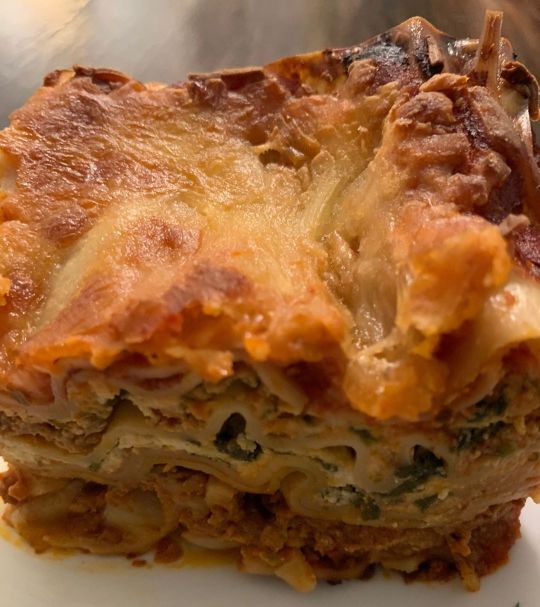
On today’s episode of the Coronavirus Cooking Diaries, I would like to express my undying love for the simple yet extraordinary pasta and meat extravaganza called Lasagna. It will probably surprise you like it did me to learn that lasagna didn’t originate in Italy but actually it is said to have originated in Greece. What? We have Greece to thank for the origins of this incredible dish? Yes, it seems that the Greeks may be responsible for the origination of the dish but clearly the Italians perfected it. Lasagna, or “Lasagne” is derived from the Greek word ‘Laganon’ which is the first known form of pasta. Laganon isn’t like lasagna as we know it, but was layers of pasta and sauce. The name actually came from the method for making Lasagna and not for the ingredients used to make it. Laganon was used to describe flat dough that was sliced into strips. Some researchers in Britain found a cookbook that had a lasagna recipe from the 1390’s and claim they are the ones that invented the first lasagna. I don’t really care who invented it, I feel that it’s my mission to perfect it! In Northern Italy, you’ll find lasagna with flat noodles but in southern Italy the noodles are rippled. Either way it is still delicious. Lasagna is a very regional dish and my family comes from the southern Italy. When I make lasagna I typically use meatballs and sausage, and ricotta cheese with egg, Pecorino Romano, black pepper and parsley. I had a few things laying around and decided to also add chorizo to the meat and ramp tops to the cheese. I don’t use bechamel, that’s not my family’s tradition. Either way, my Lasagna turned out to be delicious! What do you think? . . . . . . . . #lasagna #lasagnabolognese #lasagnalover #lasagnas #coronaviruscookingdiaries #naplesitaly #italiancooking #coronavirusbakingchronicles #cooking #lovetocook #ilovetobake #nycmanofmanytalents #baking #mancanbake #mancancook #212 #manhattan #chefswhorock #foodislove #nyc #nyc🗽 #nyclife #nyclifestyle #scenefromny #scenefromnyc #washingtonheights #newyorker #newyorkcity #newyorkny #newyorkcitylife (at New York, New York) https://www.instagram.com/p/CAKDKTYJvn4/?igshid=7qtc1ljrop0t
#lasagna#lasagnabolognese#lasagnalover#lasagnas#coronaviruscookingdiaries#naplesitaly#italiancooking#coronavirusbakingchronicles#cooking#lovetocook#ilovetobake#nycmanofmanytalents#baking#mancanbake#mancancook#212#manhattan#chefswhorock#foodislove#nyc#nyc🗽#nyclife#nyclifestyle#scenefromny#scenefromnyc#washingtonheights#newyorker#newyorkcity#newyorkny#newyorkcitylife
0 notes
Text
The Spinach Lasagna Recipe - Chicken Fried Receipe | Popular Chicken Food Fried Breast & Thigh Rice chili Receipe

How to make Classic Lasagna with Ricotta cheese’ at home?
The word “lasagna” or “lasagne” is derived from the word “Laganon” which is a Greek word for pasta. Although many of us connect lasagna pasta with Italy, some claim that it actually originated in either Greece or England. The majority of reports, nevertheless, tend to suggest that the pasta meal as we know it today initially appeared in the Middle Ages in the Italian city of Naples.
The Classic Lasagna Recipe
Ricotta cheese is a popular ingredient in lasagnas because it gives the dish a creamy texture and delicious flavor.
Prep Time: 20 minutes
Cook Time: 1 hour 30 minutes
Total Time: 1 hour 50 minutes
Learen more About click here:-
lasagna recipe
banana bread recipe
popular food recipes
fried rice recipe
potato soup recipe
chili recipe
chinese chicken fried rice recipe
chicken breast recipes
chicken thigh recipes
butter chicken
brownie recipe
chicken parmesan recipe
chicken fried rice recipe
all recipes
food recipes
easy food recipes
biryani food recipes
0 notes
Text
Lagana (Λαγάνα) is an ancient Greek flatbread traditionally baked for Clean Monday – the first day of the Great Lent. (Clean Monday actually refers to the abstention from sinful attitudes and non-fasting food ). Traditionally, it was prepared unleavened (without the yeast), like those mentioned in the Old Testament, but leavened lagana is nowadays more common. It is typically flat, oval-shaped, with surface decorated by impressing fingertips.
Sesame seeds are a common topping, and it may also be topped with other herbs, and seasoned with olive oil. Linguistically, the word lagana comes from the Greek word “ laganon” (in ancient Greek: λάγανον), which is also the origin of the Italian word lasagna.
Lagana is never cut with a knife but rather broken apart, because iron, the stuff of knife-making long ago, was believed to contain the powers of evil.

Ingredients:
500 g hard flour (bread flour)
350 ml water, at room temperature
10 g dry yeast
pinch of granulated sugar
10 g salt
2 tablespoons olive oil
For coating
2 tablespoons water
1 teaspoon sugar
sesame seeds
Method:
Preheat oven to 220° C (446° F)
Combine the water, yeast and sugar in a mixer’s bowl.
Set it aside for 15-20 minutes so the yeast can activate.
Add the flour, salt and olive oil.
Knead by hand for at least 10 min.
When ready, transfer the dough to a bowl.
Cover bowl with plastic wrap and set aside for 1-2 hours, until it doubles in size.
Punch down the dough and divide it in to 2 equal halves.
Lay out a sheet of parchment paper on to a working surface.
Add your dough, dust with some flour and roll out. If it is too difficult to roll out, dust with some more flour.
Form 2 flat oval loaves
Transfer to a baking pan along with the parchment. Simply lift the edges of the parchment and transfer.
Repeat the exact same process for the other half of the dough.
To make the coating, combine the water and sugar in a small bowl. Stir until the sugar dissolves completely.
Brush coating over both flatbreads and sprinkle with a generous amount of sesame seeds over the top.
Set them aside for 20 minutes, so they can rise again.
When they have risen, use your index finger to make indentations all over the dough. This gives the “lagana” its characteristic appearance.
Drizzle with some extra virgin olive oil.
Bake for about 20 minutes. Make sure your oven is properly preheated so that the flatbread can turn out as crunchy as possible.
When golden and crunchy, remove from oven and serve it in the traditional Greek manner with Taramosalata (Fish Roe Dip), Potato Garlic Mash and Kalamata olives.
This slideshow requires JavaScript.
Lagana Lagana (Λαγάνα) is an ancient Greek flatbread traditionally baked for Clean Monday - the first day of the Great Lent. 439 more words
0 notes
Text
Eredeti lasagne al forno recept
Eme csodálatos réteges tészta kialakulása sokkal régebbre nyúlik vissza, mint gondolnánk. Meglepő módon az ókori Görögországig vezethető vissza, amikor a rómaiak megszállták az országot, és megismerték a helyi kultúrát, gasztronómiát. A lasagne feltehetően a görög “laganon”-ból (csíkokra vágott lapos tészta) fejlődött ki, amit szintén réteges, szaftos ételek készítéséhez használtak, de a mai modern verziót már az olaszok tökéletesítették. Tovább https://ift.tt/2GYIMT3
0 notes
Text
The Delicious History of Lasagna
The Delicious History of Lasagna
Lasagna, could there be a more perfect dish? It’s comfort food on steroids. Layers of cheese generously piled on top of decadent amounts of meat, and then smothered with a sauce that would bring tears to the most cynical Italian’s eyes. When you cut into this amazing concoction of bliss you often don’t think of the history behind lasagna. Surprisingly, lasagna did not originate in Italy.
Lasagna Originated in Greece
We may never know the exact person who created lasagna. In fact, this dish was not named after an individual, but after a fermented noodle called laganon that was frequently used in ancient Greece where lasagna originated. In the beginning, lasagna was sprinkled with toppings, and eaten with a pointed stick. Unrecognizable by today’s standards, the only similarity between the two was the layering of pasta and sauce.
Thank the Romans
Lasagna would not be so popular today if not for the Romans. While this dish was created in Greece it was not until the Romans conquered the region around 146 BC that the dish became known. The Romans were famous for embracing local customs, cultures, and foods into their society so it wasn’t long before lasagna became commonplace in their cuisine. Rome came to adore the lagonon noodle, a flatbread dough cut into thin strips, then smothered in a various toppings. Under Roman influence, the recipe made its way to Italy where chefs altered it until it became the amazing dish we know today.
Lasagna first made is a grand entrance in Naples, Italy during the Middle Ages in the 14th century. Initially, this dish was reserved for special events and holidays. Ironically, this pleasure inducing food was introduced to Italians in the middle of the Black Plague.
Mama Mia! Hello, America!
Eventually, lasagna made its way to North America in the late 1800s with Italian immigrants who brought their family recipes to the New World. Shortly after, Americans were introduced to Parmigiano-Reggiano embraced with layers of slow-cooked tomato sauce separated by perfectly cooked lasagna noodles. It was love at first taste, and lasagna quickly became a staple within American cuisine.
So, is Lasagna Italian or Greek?
The debate continues as to who truly created this decadent dish. People state that it’s Italy claim to fame since they were the ones who perfected the dish. Researchers in Great Britain support this conclusion as they discovered a cookbook created in the 1390s containing an Italian recipe for lasagna.
Several centuries later lasagna remains a popular comfort food that is beloved by millions around the globe. The original recipe has evolved as there are vegetarian options, eggplant lasagna, and even ones with a Southwestern Flair. The choices are endless. Regardless what ingredients are used this Italian comfort food is a historic staple that will continue pleasing pallets for generations to come.
The post The Delicious History of Lasagna appeared first on Italian Garden - San Marcos Texas.
0 notes
Text
Fried Rice Recipe | Chicken Fried Recipe | Classic Lasagna Recipe

How to make Classic Lasagna with Ricotta cheese’ at home?
The word “lasagna” or “lasagne” is derived from the word “Laganon” which is a Greek word for pasta. Although many of us connect lasagna pasta with Italy, some claim that it actually originated in either Greece or England. The majority of reports, nevertheless, tend to suggest that the pasta meal as we know it today initially appeared in the Middle Ages in the Italian city of Naples.
The Classic Lasagna Recipe
Ricotta cheese is a popular ingredient in lasagnas because it gives the dish a creamy texture and delicious flavor.
Prep Time: 20 minutes
Cook Time: 1 hour 30 minutes
Total Time: 1 hour 50 minutes
Learen more About click here:-
Chicken Fried Recipe
Popular Chicken Fried Rice Recipe
Chicken Food Fried Breast & Thigh Rice chili Receipe
0 notes